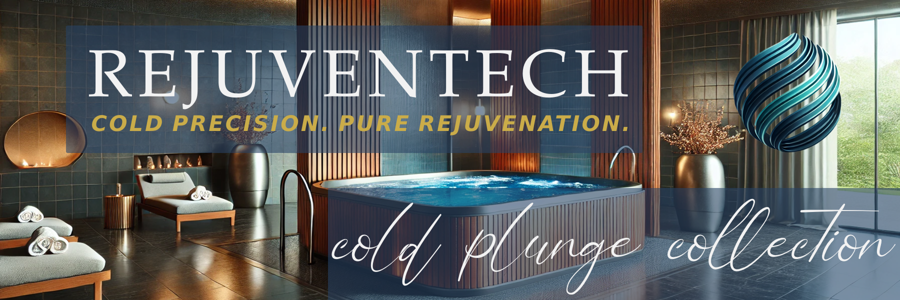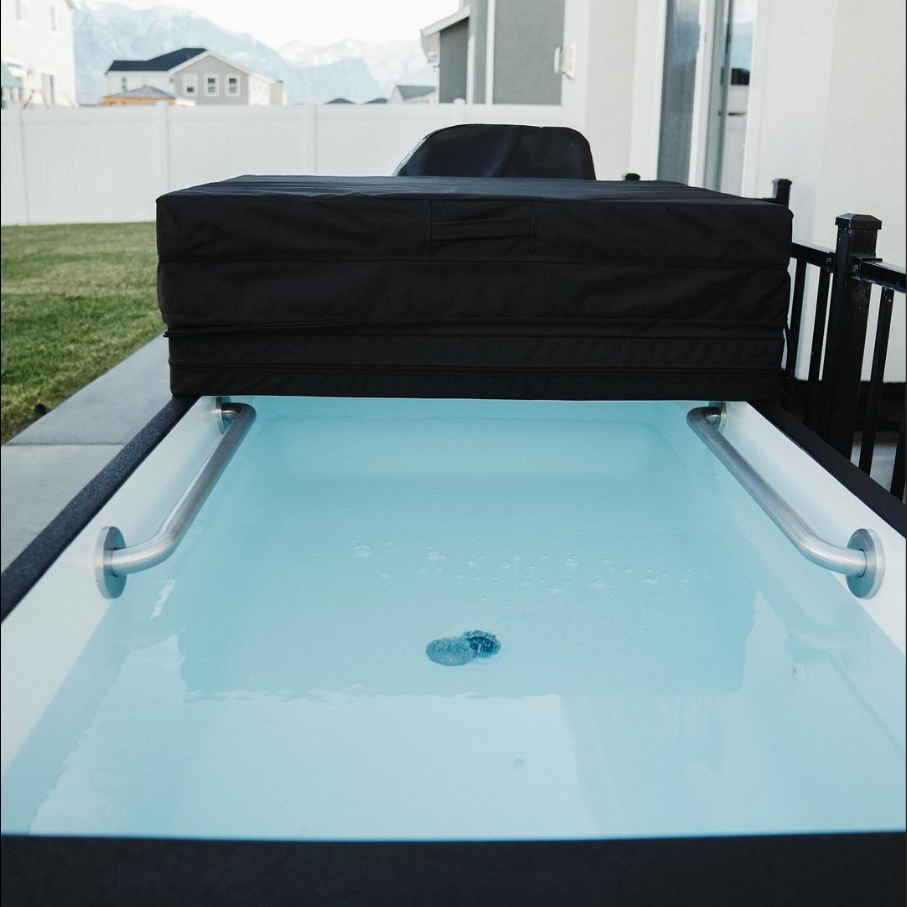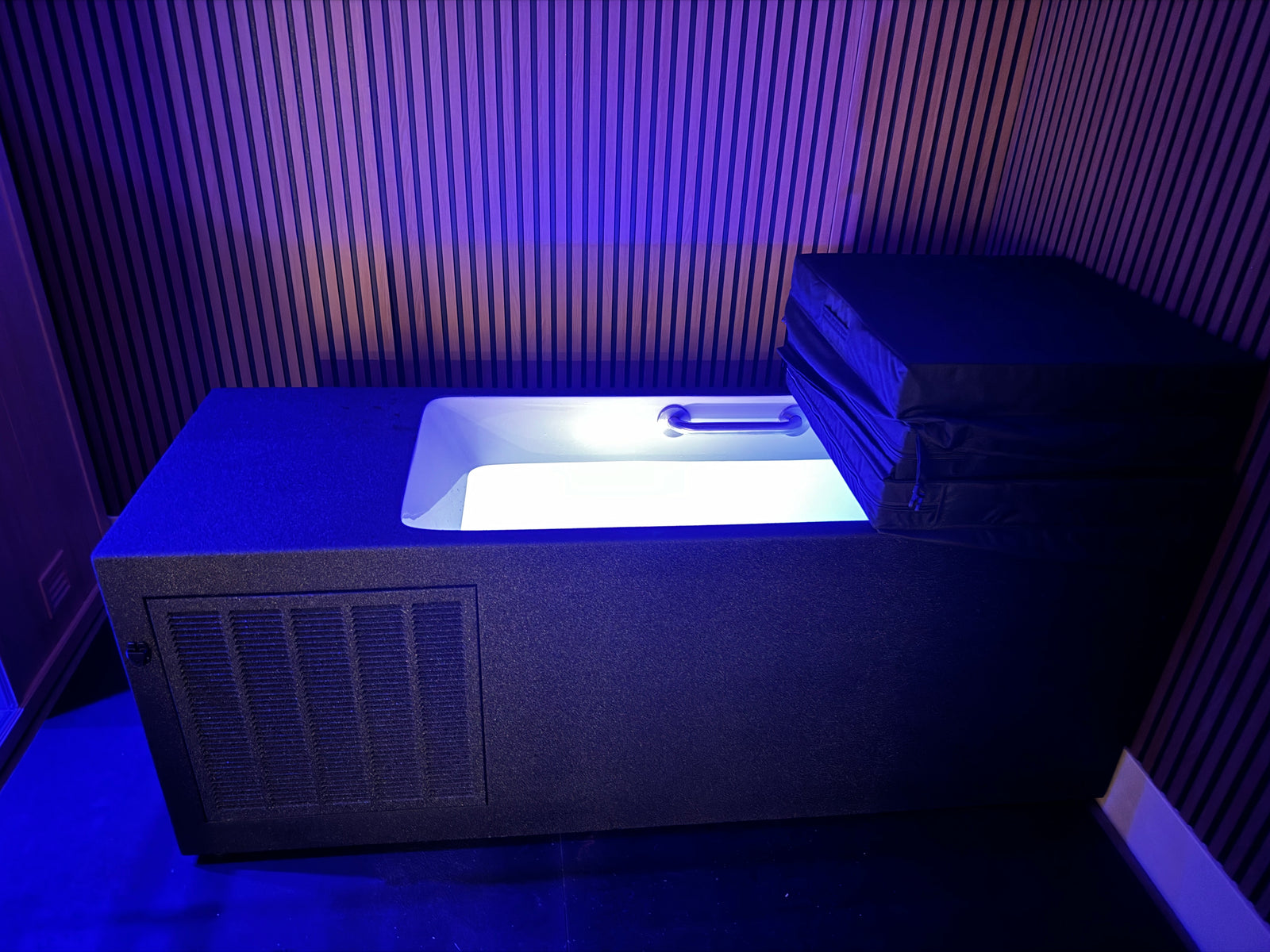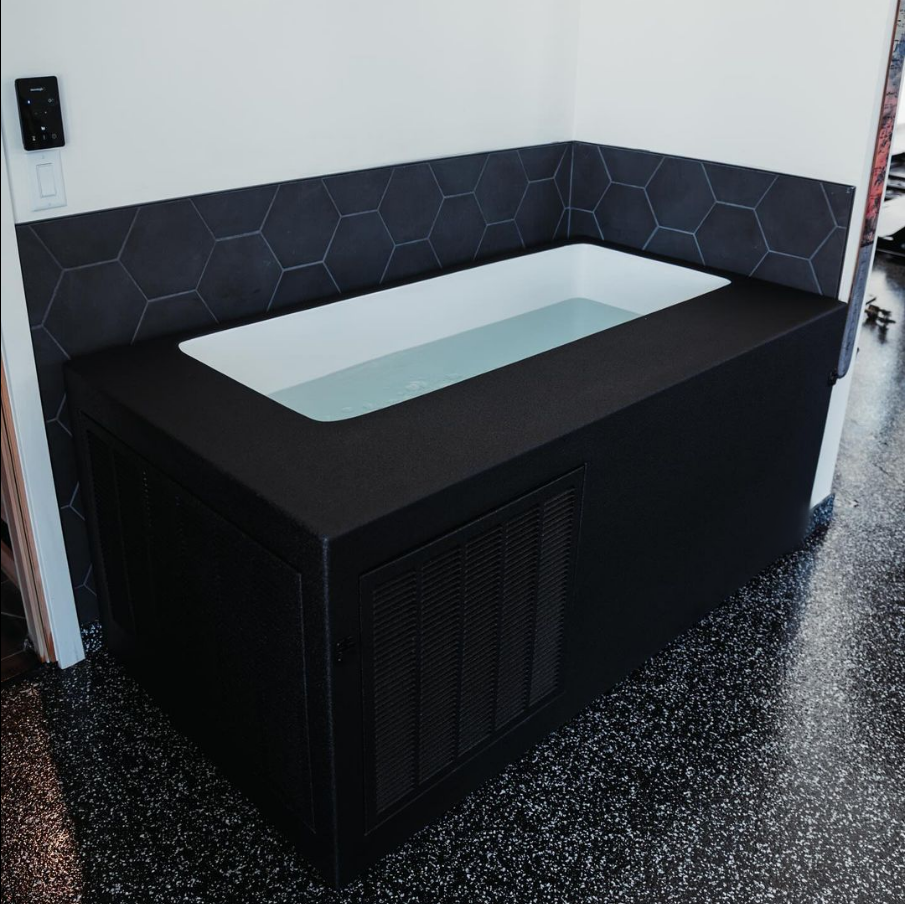

SUPERIOR COLD PLUNGES EXPERTLY CRAFTED IN UTAH
Immerse yourself in the timeless benefits of cold water therapy.
Our premium cold tubs are designed to promote longevity and recovery.
Not sure what which product is the best fit for you?


Our Commitment to Quality and Customer Care
RejuvenTech is committed to ensuring that every wellness product you purchase meets or exceeds your expectations. To maximize the longevity and performance of your investment, we provide detailed, step-by-step installation and care instructions.
We take immense pride in our craftsmanship, maintaining the highest standards of professionalism and quality across every product we offer.
If you believe there is an issue with your purchase, please review the warranty included in your purchase for guidance. We are dedicated to resolving warranty concerns with efficiency and precision, guaranteeing your satisfaction with both our coverage and service.
Frequently-asked Questions
-
Cold plunging offers a variety of benefits, both physical and mental. Physically, it can reduce inflammation, improve circulation, enhance recovery after exercise, and boost the immune system. Cold exposure stimulates the vagus nerve, which helps to reduce stress and improve overall mood. Many people also report increased energy levels and improved mental clarity after regular cold plunging sessions.
-
The main difference between a cold plunge and an ice bath lies in their setup, temperature, and typical use. Here's a breakdown of the key distinctions:
1. Setup and Equipment
- Cold Plunge: A cold plunge typically refers to a specially designed pool or tub filled with cold water that is kept at a consistent low temperature using a built-in cooling system. Cold plunge pools are often found in spas, gyms, and wellness centers, and they are designed for repeated use with little maintenance. The water in a cold plunge is generally circulated and filtered, maintaining cleanliness and temperature consistency.
- Ice Bath: An ice bath is usually a temporary setup where a tub, bath, or container is filled with water and then cooled by adding ice. The temperature of an ice bath is controlled by the amount of ice added, and it can fluctuate as the ice melts. Ice baths are often prepared on an ad-hoc basis, particularly for athletic recovery, and do not typically have a built-in system to maintain the temperature over time.
2. Temperature
- Cold Plunge: The water temperature in a cold plunge is typically maintained between 50°F to 59°F (10°C to 15°C). The cooling system ensures that the temperature remains stable throughout the duration of the plunge, providing a consistent experience.
- Ice Bath: Ice baths can reach lower temperatures than cold plunges, often ranging from 32°F to 50°F (0°C to 10°C), depending on the amount of ice used. The temperature can vary during the session as the ice melts and the water warms up slightly.
3. Typical Use
- Cold Plunge: Cold plunges are often used in a more controlled, spa-like environment and are designed for repeated use by multiple people throughout the day. They are popular for their health benefits, including reducing inflammation, improving circulation, and enhancing recovery after exercise. Cold plunges are also often part of a wellness routine, used in conjunction with saunas or steam rooms.
- Ice Bath: Ice baths are more commonly used by athletes and fitness enthusiasts immediately after intense physical activity to reduce muscle soreness and inflammation. Because ice baths can be prepared quickly using available ice, they are convenient for short-term use but are less consistent in terms of temperature control compared to cold plunges.
4. Comfort and Accessibility
- Cold Plunge: Due to the controlled environment and stable temperatures, cold plunges are generally more comfortable and easier to use regularly. The consistent temperature and cleanliness make them ideal for routine use in wellness settings.
- Ice Bath: Ice baths can be more intense and less comfortable, especially for those who are not accustomed to extreme cold. The initial shock of entering an ice bath can be greater due to the lower temperatures, making it a more challenging but effective method for quick recovery.
In summary, while both cold plunges and ice baths offer similar benefits related to cold exposure therapy, cold plunges provide a more controlled, consistent, and often more comfortable experience, typically found in professional wellness settings. Ice baths, on the other hand, are more commonly used in athletic recovery scenarios and involve a more makeshift setup with potentially lower, more variable temperatures.
-
Cold plunging and whole-body cryotherapy are both methods of exposing the body to extreme cold for therapeutic benefits, but they differ significantly in their processes, temperatures, duration, and the mechanisms by which they provide benefits. Here’s a detailed comparison:
1. Process and Environment
- Cold Plunging: Cold plunging involves immersing the body in cold water, typically in a specially designed plunge pool or tub. The water temperature is usually maintained between 50°F to 59°F (10°C to 15°C). The body is fully submerged, except for the head in some cases, and the cold water directly contacts the skin, cooling the body gradually.
- Whole-Body Cryotherapy: Whole-body cryotherapy (WBC) involves standing in a cryotherapy chamber or cryosauna, where the body is exposed to extremely cold, dry air, typically cooled by liquid nitrogen or refrigerated cold air. The temperatures in these chambers can drop to between -200°F and -300°F (-129°C to -184°C). The exposure is brief, usually lasting 2 to 4 minutes, and the body is surrounded by the cold air rather than being immersed in a liquid.
2. Temperature
- Cold Plunging: The water in a cold plunge is cold but not nearly as extreme as cryotherapy, typically maintained between 50°F to 59°F (10°C to 15°C). The cold water gradually lowers the body’s temperature, allowing for a controlled and steady cooling process.
- Whole-Body Cryotherapy: Cryotherapy involves exposure to much colder temperatures, often as low as -200°F to -300°F (-129°C to -184°C). These extreme temperatures cause a rapid cooling of the skin’s surface without lowering the core body temperature significantly.
3. Duration
- Cold Plunging: Sessions in a cold plunge usually last between 5 to 15 minutes, depending on the individual’s tolerance and experience level. The body is gradually cooled as it remains immersed in the water.
- Whole-Body Cryotherapy: Due to the extreme cold, cryotherapy sessions are much shorter, typically lasting only 2 to 4 minutes. The brief exposure time is sufficient to trigger the desired physiological responses without causing harm.
4. Mechanism of Action
- Cold Plunging: The cooling effect in cold plunging is due to the direct contact of cold water with the skin, which gradually lowers the body temperature, reducing inflammation, and promoting muscle recovery. The cold water constricts blood vessels, reduces swelling, and numbs nerve endings, which can help alleviate pain and soreness.
- Whole-Body Cryotherapy: Cryotherapy works by rapidly cooling the skin’s surface temperature, which triggers a systemic response from the body. The extreme cold causes blood vessels to constrict and redirect blood to the core to protect vital organs. After leaving the chamber, the blood vessels dilate, and oxygenated, nutrient-rich blood flows back to the extremities, promoting healing and reducing inflammation.
5. Accessibility and Equipment
- Cold Plunging: Cold plunging requires access to a cold plunge pool or tub, which can be set up in various locations, including homes, gyms, and spas. It is generally more accessible and can be done with minimal specialized equipment beyond the plunge pool.
- Whole-Body Cryotherapy: Cryotherapy requires a specialized cryotherapy chamber or cryosauna, which are expensive and typically found in professional wellness centers, gyms, and specialized cryotherapy clinics. The equipment requires trained personnel to operate and maintain.
6. User Experience
- Cold Plunging: The experience of cold plunging is gradual, with the body slowly adjusting to the cold water. It can be initially uncomfortable but is often described as refreshing and invigorating once the body acclimates. The immersion is often accompanied by a sense of calm as the body adapts to the cold.
- Whole-Body Cryotherapy: The experience of cryotherapy is intense due to the extremely low temperatures, but it is brief. Users often describe it as exhilarating, and the short duration makes it more tolerable for those who might find prolonged cold exposure challenging.
7. Health Benefits
- Cold Plunging: The benefits of cold plunging include reduced muscle soreness, decreased inflammation, improved circulation, enhanced recovery after exercise, and potential boosts in mental clarity and mood. It is particularly favored by athletes for recovery and by wellness enthusiasts for its invigorating effects.
- Whole-Body Cryotherapy: Cryotherapy is known for its ability to reduce inflammation, speed up recovery times, improve circulation, boost metabolism, and provide relief from chronic pain and certain skin conditions. Some users also report enhanced mood and energy levels due to the release of endorphins triggered by the extreme cold.
In summary, while both cold plunging and whole-body cryotherapy offer similar benefits related to cold exposure, they differ significantly in terms of their process, temperature, duration, and user experience. Cold plunging provides a more gradual and prolonged cooling effect through water immersion, while cryotherapy offers a rapid, intense cold experience using extremely low temperatures in a controlled environment.
-
The optimal duration for a cold plunge varies depending on your experience and tolerance. For beginners, it’s recommended to start with shorter durations, such as 1 to 2 minutes, and gradually increase the time as your body acclimates to the cold. More experienced users might stay in the cold plunge for 5 to 10 minutes. However, it's crucial to listen to your body and exit the plunge if you feel excessively cold, numb, or uncomfortable.
-
The typical temperature range for a cold plunge is between 50°F to 59°F (10°C to 15°C). This range is cold enough to elicit the therapeutic benefits without being too extreme for most users. Some advanced practitioners may opt for even colder temperatures, but it’s important to ensure the water is not so cold that it causes shock or injury.
-
The frequency of cold plunges depends on individual goals and tolerance. Many people find benefits with cold plunging 2 to 3 times per week, while others may incorporate it into their daily routine. As with any wellness practice, consistency is key, but it's also important to allow the body time to recover between sessions, especially if you're new to cold exposure.
-
While cold plunging can be safe for most people, it’s not recommended for individuals with certain medical conditions, such as heart problems, high blood pressure, or circulatory issues. Pregnant women and those with severe cold sensitivity should also consult a healthcare provider before trying cold plunging. It’s always advisable to start with short, less intense sessions and gradually build up as your body adapts.
-
Before a cold plunge, it’s a good idea to warm up the body with light exercise or stretching to get your blood flowing. After exiting the plunge, gently warm up with a towel or blanket, and consider doing some light movement or a warm shower to gradually bring your body temperature back to normal. Avoid immediately jumping into hot water, as this can cause a rapid change in body temperature that might be uncomfortable or unsafe.
-
Yes, cold plunging is widely used by athletes for muscle recovery. The cold temperature helps to reduce inflammation and muscle soreness by constricting blood vessels and decreasing metabolic activity, which can alleviate pain and speed up the recovery process. It's particularly effective after intense workouts or competitions.
-
Cold plunging can have significant mental health benefits. The exposure to cold water triggers a release of endorphins and other neurotransmitters that enhance mood and reduce stress. Regular cold plunging can also improve resilience and mental toughness by helping individuals learn to stay calm and focused in uncomfortable situations. Many people report feeling more energized, clear-headed, and emotionally balanced after incorporating cold plunges into their routine.
-
The short answer is, about 6-8 hours.
The time it takes to cool a cold plunge to the desired temperature depends on several factors, including the initial water temperature, the desired final temperature, the capacity of the plunge pool, and the efficiency of the chiller or cooling system being used. Here’s a general overview:
1. Initial Water Temperature
- Starting Temperature: If you are filling the cold plunge with tap water, the starting temperature might range from around 50°F to 70°F (10°C to 21°C) depending on your location and the season. Cooler starting temperatures will require less time to reach the desired cold plunge temperature.
2. Desired Final Temperature
- Target Temperature: Cold plunges typically aim for a water temperature between 50°F to 59°F (10°C to 15°C). The closer your starting temperature is to this range, the quicker the cooling process will be.
3. Capacity of the Plunge Pool
- Volume of Water: Larger plunge pools with more water will naturally take longer to cool compared to smaller ones. The volume of water significantly impacts the time needed to reach the desired temperature.
4. Efficiency of the Cooling System
- Chiller Capacity: The power and efficiency of the chiller or cooling system are critical factors. More powerful chillers can cool water more quickly. For instance, a high-capacity chiller can cool a small to medium-sized plunge pool by several degrees per hour.
- Ambient Temperature: The surrounding air temperature can also affect how quickly the water cools. In warmer environments, the chiller may need to work harder, potentially extending the cooling time.
5. Estimated Cooling Time
- General Estimate: For a typical cold plunge pool with a high-efficiency chiller, it may take anywhere from 4 to 8 hours to cool the water from an average tap temperature of around 70°F (21°C) down to 50°F (10°C). Larger plunge pools or those starting at higher temperatures may take longer.
6. Factors That Can Influence Cooling Time
- Circulation: Proper water circulation helps distribute the cold more evenly and can reduce cooling time.
- Insulation: Well-insulated plunge pools will retain cold temperatures better, reducing the workload on the chiller and potentially speeding up the initial cooling process.
- Cooling Process: Some systems allow for gradual cooling over a longer period, while others may have "quick chill" options that can cool the water faster but might consume more energy.
7. Maintenance and Temperature Holding
- Maintaining Temperature: Once the plunge pool has reached the desired temperature, the chiller will typically cycle on and off to maintain this temperature. Keeping the cover on when not in use can help maintain the temperature and reduce the need for frequent cooling cycles.
In summary, the time it takes to cool a cold plunge can range from several hours to most of the day, depending on the factors mentioned above. For a more precise estimate, it's best to consult the specifications of the chiller system and consider the specific conditions of your cold plunge setup.
-
RejuvenTech cold plunge tubs are backed by a 60-month warranty on the tub and a 12-month warranty on electronics and accessories from the original date of purchase, covering manufacturing defects. This warranty applies to personal and household use, provided the product is installed and maintained according to the recommended guidelines, and the defect is not the result of unauthorized or improper use.
The warranty excludes damages incurred during shipping (covered by freight insurance) and issues caused by misuse or improper handling. This warranty is non-transferable and limited to the repair or replacement of defective components without charge. Shipping costs are not included.
To file a claim, RejuvenTech must be notified within 10 days of discovering a defect. The claim should include a detailed description of the issue along with customer information, such as name, address, and installation date.
-
Cold plunges can significantly enhance the service offerings at spas and gyms by providing clients with a unique wellness experience. The benefits include improved muscle recovery, reduced inflammation, enhanced circulation, and increased energy levels. For spas, cold plunges can complement other treatments like massages or saunas, creating a holistic wellness routine. For gyms, they are particularly appealing to athletes and fitness enthusiasts looking for effective recovery methods.
-
The space required for a cold plunge installation depends on the size and model of the plunge pool. Typically, a standard cold plunge pool might require an area of about 6’ x 6’, with additional space needed around it for safe entry and exit. Smaller, portable units might require less space, while custom-built or larger commercial models could need more room. It’s also important to consider the plumbing and drainage requirements when planning the installation.
-
The cost of installing a cold plunge can vary widely depending on the size, model, and whether it’s a portable or built-in unit. Installation costs typically range from $5,000 to $20,000 or more, with higher-end commercial units at the upper end of the scale. Maintenance costs include regular cleaning, water treatment, and ensuring the mechanical components like chillers and filters are functioning properly. Maintenance is generally straightforward, but it’s essential to budget for ongoing upkeep to keep the plunge in optimal condition.
-
Marketing cold plunges effectively involves educating clients on the numerous health benefits they offer, such as faster muscle recovery, improved circulation, and stress relief. Highlight these benefits in promotional materials, social media campaigns, and during client consultations. Offering introductory sessions, bundled packages with other treatments, or memberships that include cold plunge access can also attract clients. Testimonials and positive reviews from existing clients who have experienced the benefits can be powerful tools to draw in new users.
-
Safety is paramount when offering cold plunges. It’s important to have clear guidelines for clients on how to use the plunge safely, including recommended time limits and temperature ranges. Staff should be trained to monitor clients for signs of discomfort or adverse reactions, and there should be clear procedures for dealing with emergencies. Additionally, ensure that the plunge area is equipped with non-slip surfaces, handrails, and proper signage to prevent accidents. Regular maintenance checks are also crucial to ensure the equipment is functioning safely and the water quality is maintained.
For businesses


Easily Disable 5G on Your Phone for Health and Longevity (Android)
Unfortunately, newer Android models like the Samsung S25 have removed easy access to disable 5G from the standard settings menu. But the method shown here circumvents that limitation and gives you full control of your device's network connection in a few free, easy steps.

Natural Remedies to Remove Neurospora Sitophila Mold from the Body
Neurospora sitophila is a red/orange mold that can colonize the body, particularly the sinuses and brain, leading to chronic inflammation, neurological symptoms, and respiratory distress. Removing it requires a comprehensive natural approach that includes antifungal treatments, sinus cleansing, detoxification, immune support, and environmental control.

Brain Health as the Ultimate Success Multiplier, Part 5: How Successful People Can Proactively Safeguard Their Health
Success isn't a product of willpower and ambition alone—it requires a strong foundation of physical and mental well-being. Yet, many high achievers only begin prioritizing their health after encountering burnout, cognitive decline, or unexplained fatigue. The good news? Health deterioration is often preventable, and brain function can be optimized with the right strategies.

Brain Health as the Ultimate Success Multiplier, Part 4: The Multiple Health Assaults That Hinder Potential
While ambition, talent, and discipline are essential components of success, they can only go so far when the body and brain are under attack. Numerous health assaults, often unnoticed or underestimated, silently chip away at the potential of even the most driven individuals. These assaults don't just cause occasional fatigue or brain fog—they can derail entire careers, diminish creative capacity, and leave otherwise capable people struggling to perform at their peak. Understanding these hidden health disruptors is crucial for anyone seeking long-term success.



















